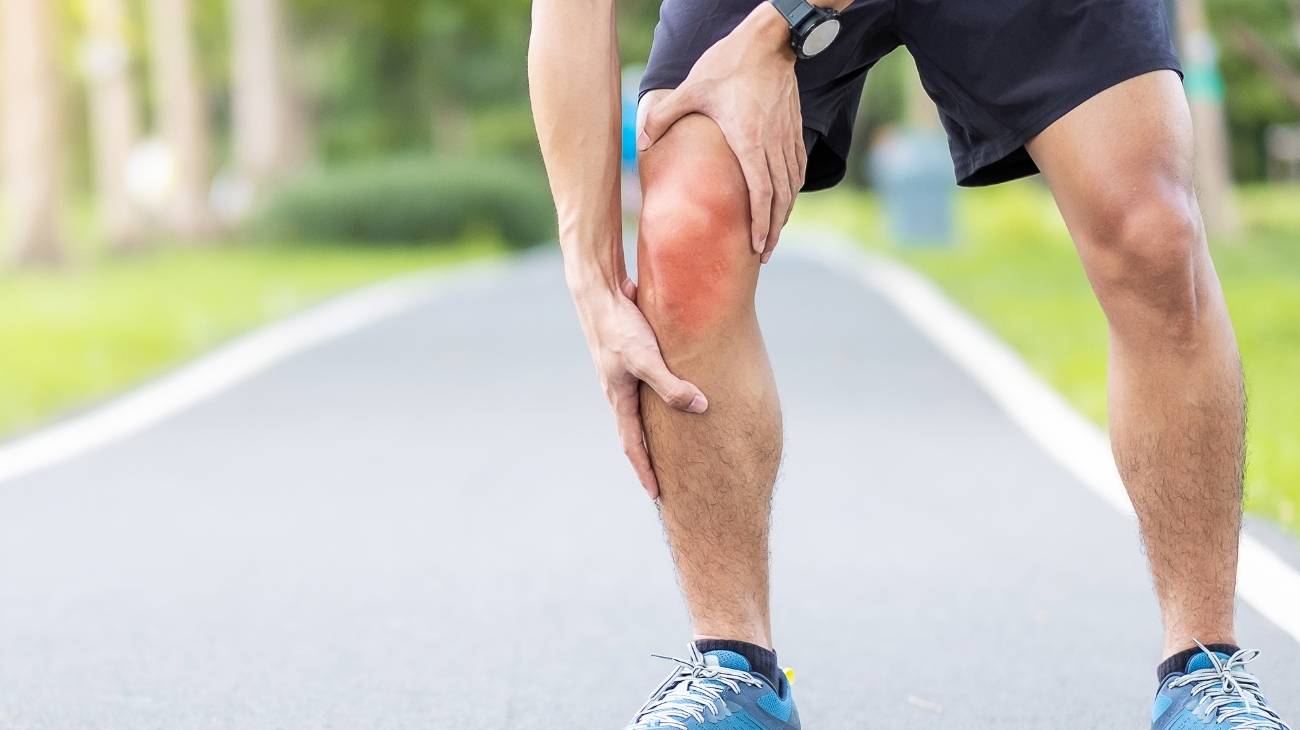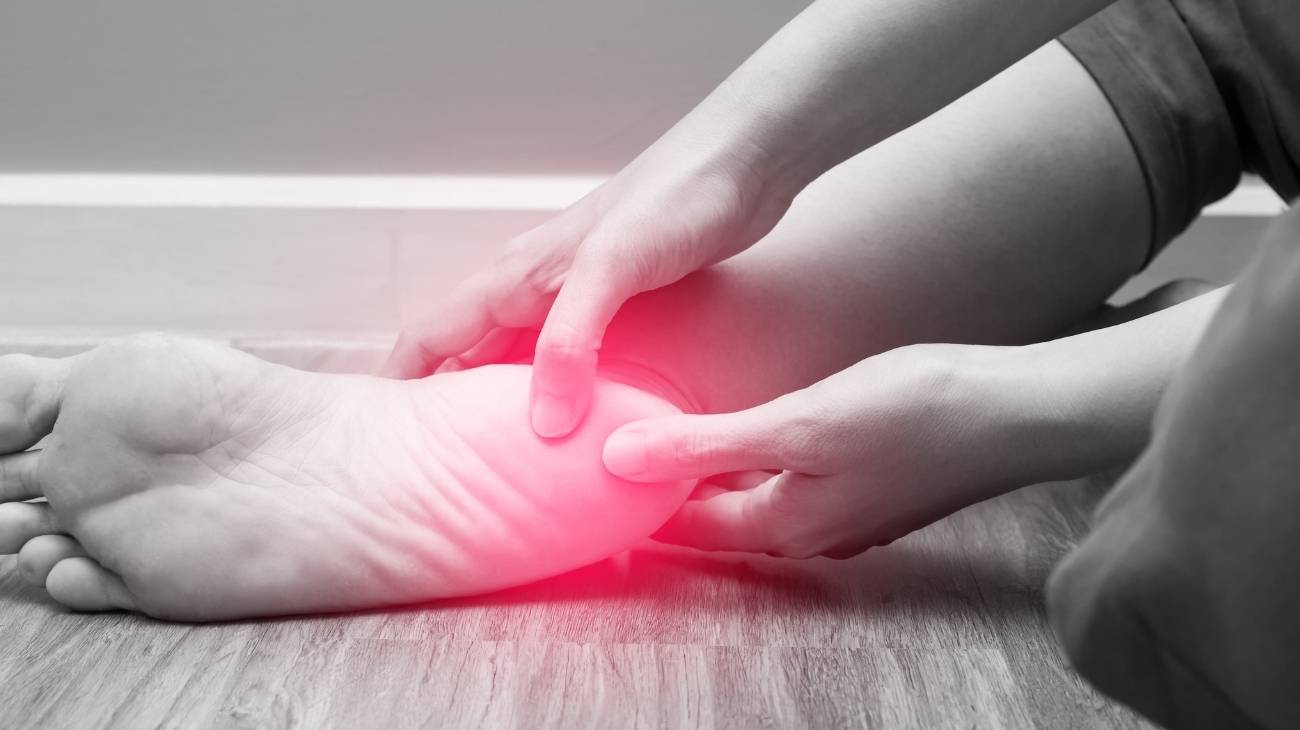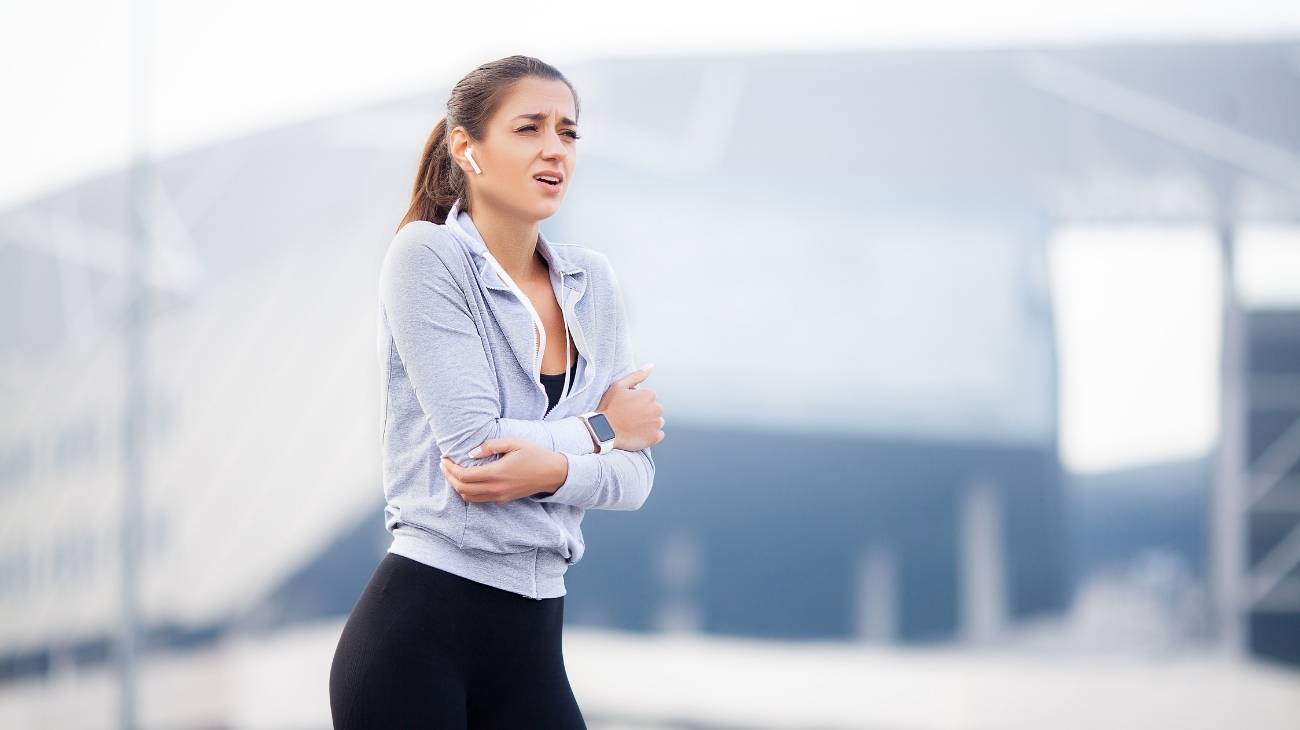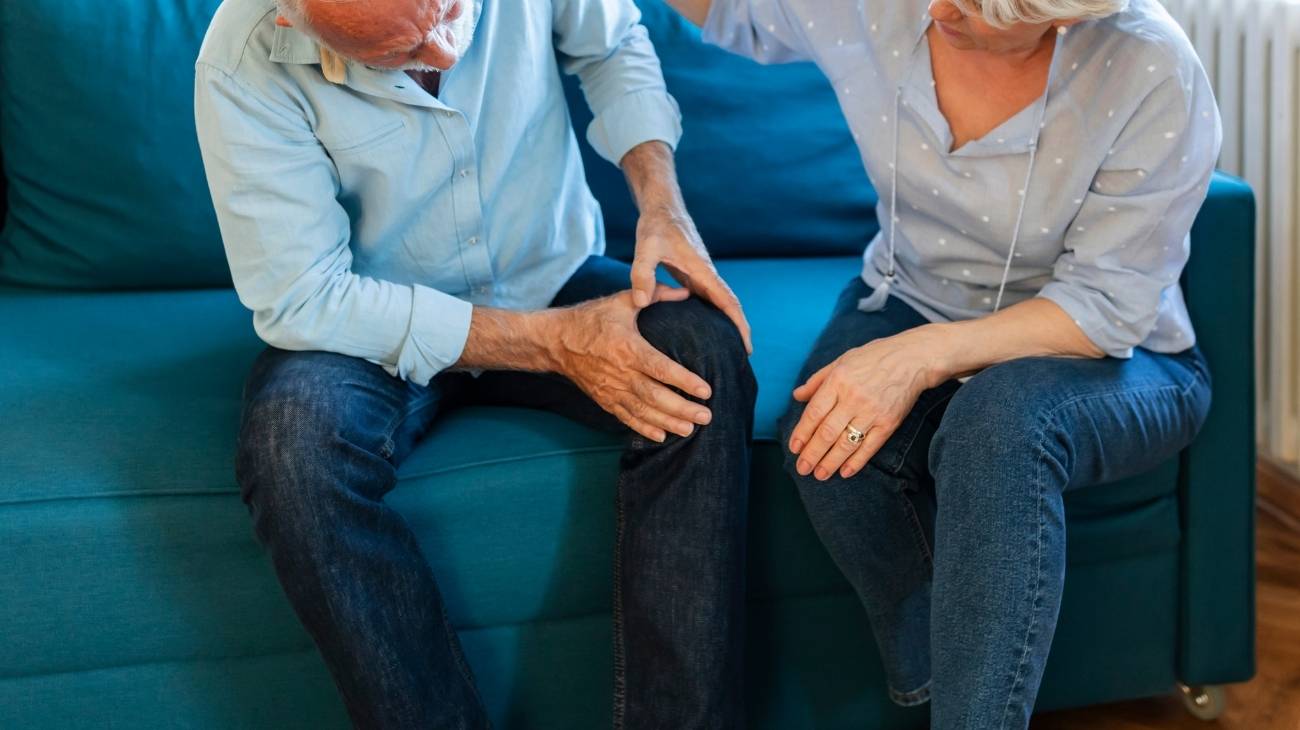- What are the most common cycling injuries?
- What are the benefits of compression stockings and calf sleeves for cyclists?
- What characteristics should you take into account before choosing the best compression sleeves for cycling?
- Do compression socks really work to improve performance and recovery in cyclists?
One of the most popular sports in the world is cycling. It can be done on different types of terrain and is also characterised by its numerous health benefits: it optimises muscle tone, improves the joints, increases calcium in the bones, increases lung capacity, etc.
However, cyclists are not exempt from suffering an injury during their sporting life. Especially if they do not use the right protective equipment. For this reason, we will detail the most common pathologies caused by cycling and highlight the importance of using compression stockings for this sport.
What are the most common cycling injuries?
By nature, cycling requires athletes to maintain constant pedalling for several consecutive hours in which, as well as requiring sufficiency on the part of the legs, an incessant succession of flexion and extension of the ankle, knee and hip joints must also be involved.
As well as stability of the lower back, trunk and abdominal region and even correct neck movements in extension and relevant cushioning actions in the arm and wrist. In other words, it demands a series of body structures to show the best performance.
Consequently, since cycling intervenes in most parts of the body, it can generate different injuries due to the repetitiveness of all the gestures associated with pedalling. In the same way, by the postures that the athlete adopts on the bike, the surface on which he/she practices (mountain or asphalt) and the speed at which he/she covers the target distance.
Without further ado, here are the most common pathologies that impair the cyclist's well-being and cause frustration:
Patellar tendonitis
This is a type of injury to the tendon that connects the kneecap to the tibia. This is known as the "patellar tendon" and works with the muscles at the front of the thigh to extend the knee. The condition is usually caused by heavy pedalling, incorrect saddle set-up, sudden changes of pace and pedalling with high gears over long distances.
As a result, it causes severe pain and inflammation of the patellar tendon, as well as significant overloading of the knee area. This prevents the athlete from carrying out movements such as pedalling or climbing steps, for example. To treat this injury, medication and physiotherapy exercises, stretching and care methods are prescribed to restore the function of the tendon.
Chondromalacia patella
It stands out as one of the most common injuries among most cyclists and is basically a condition involving the cartilage under the kneecap (which functions as a natural shock absorber). In this sport, chondromalacia patella is often caused by pedalling for long distances or at very low cadences, as well as by maintaining a low seat height, putting more pressure between the femur and the knee.
As for the main symptoms of this pathology, it causes intense pain in the front part of the knee, difficulty in fully extending it and a feeling of stiffness in the area. This is why, if the patient rides a bicycle, descends stairs or performs squats, the pain may increase acutely.
Achilles tendon tendonitis
This is a tear that occurs in the Achilles tendon, which is attached to connect the heel bone to the calf muscle. Among its most common signs and symptoms, it starts with a latent pain in the back of the leg or the upper part of the ankle and this, during cycling, becomes exponentially more acute. It also causes stiffness in the ankle area and discomfort when walking, jumping or climbing stairs.
Now, in reference to its causes, this type of injury is mostly triggered by overexertion in the tendon, that is, when the athlete remains for many hours riding his bicycle and all his training is in that way. In addition, other factors such as a too high seat, a bad position of the foot on the pedal or an incorrect adjustment of the cleats of the shoe, tend to cause tendinitis in the Achilles tendon.
Low back pain
Discomfort in the lumbar region of the body also occurs as a result of incorrectly performed cycling. These are generally diagnosed as causing severe pain in the lower back, or what is known as the "lumbar area". In most cases, low back pain in cyclists is caused by placing the saddle in a very high position, which causes hyperextension of the lumbar region.
On top of this, lumbar pain is also caused by poor posture on the bicycle, an inadequate saddle-handlebar configuration, a bicycle size that is not suitable for the athlete's body size, extremely long cranks, the use of long gear ratios that cause alterations in the pedal stroke and an upright position that causes compression of the intervertebral discs. Sometimes even genetic factors (such as dyssymmetry).
Cervicalgia
Another of the most common injuries in cyclists is cervicalgia, which affects the patient's neck directly, causing severe pain. Consequently, the diagnosis of a cervical pain can be obtained by excessive strain and overload in the neck area which, in particular, involves the nerves, vertebrae and muscles of the cervical part of the body.
In most cases, cervical pain is caused by an incorrect adjustment between saddle and handlebars, as well as by an incorrect posture of the cyclist on the bike. However, there are also other factors that affect the cervical region and cause this injury, such as: a contraindicated saddle height, an inadequate handlebar length, an anomalous distribution of weight due to the saddle being forward, etc.
Bestseller
-
2 Calf Compression Sleeve (Black/Gray)
£17,50 -
2 Calf Compression Sleeve (Green/Navy)
£17,50 -
2 Calf Compression Sleeve (Pink/Bordeaux)
£17,50 -
Sport Compression Socks (1 Pair) (Black/Gray)
£17,50 -
Sport Compression Socks (1 Pair) (Green/Navy)
£17,50 -
Sport Compression Socks (1 Pair) (Pink/Bordeaux)
£17,50
What are the benefits of compression stockings and calf sleeves for cyclists?
In order to prevent the various injuries that occur when cycling, compression garments have been designed which, as well as guaranteeing protection, help to improve performance if used consistently. In particular, compression stockings, socks and calf sleeves are elements that reach up to the knee or hip to exert a controlled force on the legs.
Many cyclists have taken to using this type of clothing during their training and competitions in order to acquire the following pros:
- They optimise muscular oxygenation.
- They contribute to regulate blood circulation.
- Improve the cyclist's performance.
- They reduce muscular pain.
- Minimise the vibration of the calf muscles during a ride.
- They prevent various injuries affecting the lower limbs.
- Speed up recovery time.
- They prevent heat loss in the area.
- They provide remarkable comfort.
- Decrease the accumulation of lactic acid.
What characteristics should you take into account before choosing the best compression sleeves for cycling?
Since compression stockings are not only intended for cyclists, it is important that athletes dedicated to cycling know how to choose the most suitable compression stockings for their sport. Therefore, we highlight the most relevant aspects to take into account when buying a compression stocking in order to get the most out of it in this discipline:
According to their function
Compression socks for cyclists can fulfil different functions depending on the condition or need of each athlete:
- Promote venous return and avoid circulatory problems.
- Free the muscles from excessive loads.
- Help the recovery of the area.
- Relieve possible pain or discomfort.
Manufacturing material
It is ideal to use compression socks that transpire without accumulating sweat in the area. Therefore, it is best to buy those that are made of nylon, polyester or elastane. These are synthetic materials that simplify the breathability of the area. It is not recommended that they have seams.
Type of compression
Apart from the function and the material of manufacture, it is also important to assess the type of compression offered by the compression stocking. Most brands have different degrees of support and this is important in order to obtain the desired benefits. Generally speaking, we recommend a sock that exerts a pressure of between 15 and 30 mmHg.
Sizing
Make sure you buy the right size, whether it is S, M, L or XL. Keep in mind that a sock that is too small can cause strangulation, slowing or stopping of blood flow, while a sock that is too large will not compress properly. Also, it is not ideal to wear a one-size-fits-all garment.
As a recommendation, to know what your exact size is, you can measure your calf circumference or calculate a ratio between your height and weight, depending on the parameters indicated by the manufacturer.
Design
Depending on the length, the design of the stocking may vary to meet a specific purpose in order to cover the skin up to a certain height. These include:
- Socks that only include the foot and sleeves.
- The short sock (or calf sleeves) that goes from the ankle to below the knee.
- The long sock that goes above the knee to mid-thigh.
- The compression sleeves that go from the feet to the waist.
Price
Overall, prices for cycling compression socks range from 25 to 50 euros, depending on the brand, design and function. Although it may be expensive for some athletes, it is not appropriate to use counterfeit or imitation socks. The latter are made of poor quality material and therefore their effectiveness may be poor.
Do compression socks really work to improve performance and recovery in cyclists?
Yes, absolutely. This type of compression garment promotes blood flow, which is the amount of blood ejected by the heart into the aorta per minute. In addition, it promotes the recovery of the muscles in a shorter time, as it helps to get more oxygen to them.
In addition, they have the capacity to avoid different injuries common in cycling, offer comfort and muscular support, as well as guaranteeing an ideal thermoregulatory function to increase the athlete's performance during competitions over long distances and for prolonged periods of time.
Therefore, compression sports socks for cyclists are the best alternative to increase sports performance, and if you have an injury, you can achieve a quick cure with the use of compression therapy, whose work is effective in improving the internal components of the foot and calf.























